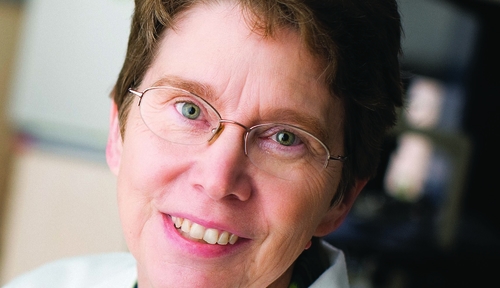They said it couldn’t be done. But Anne Kessinger, M.D., a Scribner, Neb., resident, did it.
In 1981, bone marrow transplants were just beginning to be used to treat some blood cancers such as lymphoma and leukemia. In some cases it helped provide a cure. But, for patients whose cancer had invaded the bone marrow, there were no options.
Dr. Kessinger, professor in the UNMC Division of Oncology/Hematology and at The Nebraska Medical Center, wanted to know if there was another way of collecting stem cells derived from the blood of patients.
At the time, the only way to collect stem cells from the bone marrow was to put the patient under general anesthesia then insert a long needle into the hipbone 100 or more times until enough stem cells were collected to perform a transplant.
Dr. Kessinger felt there had to be an easier and less painful way.
She knew peripheral blood stem cell transplants were successfully used in animal models as early as the 1930s and common sense told her that they also could work in humans.
With the help of the Omaha Red Cross, Dr. Kessinger and her colleagues figured out a way to collect the cells through a special process called apheresis — through veins in the arm much like donating blood.
The process was effective and enabled the use of peripheral blood stem cell transplantation in humans. The therapy provided an alternative and is now standard practice around the world.
The first peripheral blood stem cell transplant at the medical center was performed on June 6, 1984.
When Dr. Kessinger published the results of the clinical trial she conducted with 10 patients, her article was questioned by the medical community. Her colleagues around the world thought she had either fabricated results or misinterpreted them. At first, the medical journals would not accept her reports.
She eventually proved to the world that her data were correct, conventional dogma was wrong and peripheral stem cell transplantation could work.
To read more about UNMC’s leadership in bone marrow/stem cell transplantation, go to http://www.unmc.edu/aboutunmc.htm. Stories are listed under “UNMC News.”
Through world-class research and patient care, UNMC generates breakthroughs that make life better for people throughout Nebraska and beyond. Its education programs train more health professionals than any other institution in the state. Learn more at unmc.edu.
-30-
